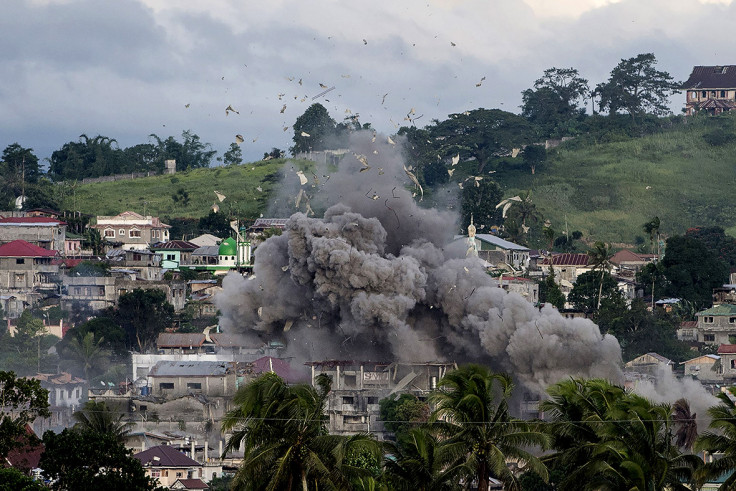Australian journalist shot in neck while covering Marawi siege in Philippines
South-East Asia correspondent of Australian Broadcasting Corporation was 'hit by a sniper bullet'.
An Australian journalist received stray bullets to his neck on Thursday (15 June) while reporting recent developments in the fighting between Philippine troops and Islamist militants in the southern Marawi district.
Adam Harvey, Southeast Asia correspondent for the Australian Broadcasting Corporation, was "hit by a sniper bullet" while covering the crisis from inside the compound of the provincial capital, presidential spokesman Ernesto Abella said.
The Lanao del Sur Provincial Capitol is located far from the conflict areas and is considered a safe zone.
He is the first journalist injured in the ongoing Marawi siege. However, he did not suffer major injuries and is reported to be doing fine.
"I just felt like something, like a stone, hit me on this side of the neck... But I'm fine, I'm fine," he told reporters at the scene after undergoing first aid treatment.
Harvey was taking photos of evacuees and reportedly removed his bullet proof vest - which journalists are supposed to wear while covering conflict zones - so that he could take better pictures, local media cited a journalist who witnessed the incident as saying.
Multiple gunshots were heard in the compound, ABS-CBN News reported.
Harvey wrote on Twitter: "Lucky" and tweeted a picture of an X-ray showing the bullet lodged in his neck.
"Thanks everyone - I'm okay. Bullet is still in my neck, but it missed everything important," he said in another tweet.
Dr Jose Eric Laya who treated Harvey said the bullet was lodged below the journalist's left ear, according to the Associated Press.
Lucky. pic.twitter.com/2ZPYZfidO9
— Adam Harvey (@adharves) June 15, 2017
The presidential office has asked journalists to exercise caution while reporting the conflict. Its spokesman also urged them to remain objective in their reports.
"I think they should try to be objective as possible. And to see it in the context that this is really a... That this is basically an action of rebellion. And that they see it along that line, they report along these lines, that they are objective. Stay out of trouble," CNN Philippines cited Abella as saying.
More than 200 gunmen, 58 soldiers and policemen and 26 civilians have died since the siege began over 20 days ago. Filipino troops continue to battle the self-styled Islamic State (Isis) group's attacks in the city of Marawi on Mindanao island, in what is thought to be a serious attack in the Asia Pacific region by the Islamist militants.
The siege began after militants began attacking the town and kidnapping civilians in retaliation for the army's failed raid to capture terrorist Isnilon Totoni Hapilon in the country.
Thanks everyone - I'm okay. Bullet is still in my neck, but it missed everything important. pic.twitter.com/PBYfdrTTa6
— Adam Harvey (@adharves) June 15, 2017
The clashes have also left more than 200,000 residents of the city displaced, while more than 1,600 residents have been rescued from the besieged area.
Violent clashes in the region had forced President Rodrigo Duterte to declare martial law in the region earlier in May.
Duterte had described the Marawi attack as the start of a major offensive by the militants, who have reportedly pledged allegiance to Isis to establish a foothold in the country.

© Copyright IBTimes 2025. All rights reserved.





















